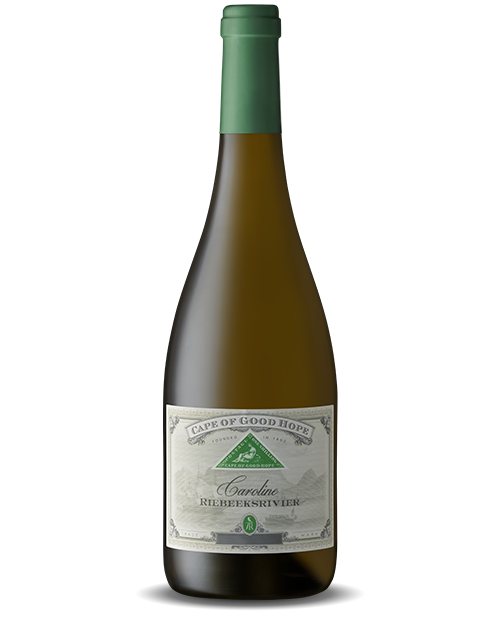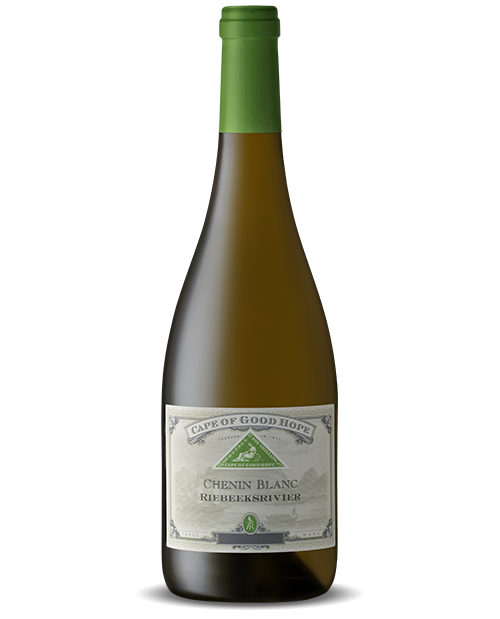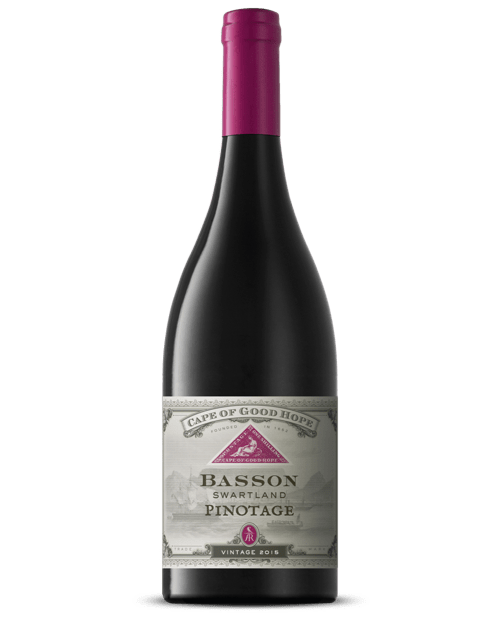Van Lill
Chenin Blanc

Van Lill Chenin Blanc 2023
Seductive perfume of stone fruit, quince, spice and chamomile with the vaguest suggestion of lemon zest or oil. The palate is wonderfully rich and immediately engaging with its ripe, bold fruits: nectarine, sun-dried apricot and mango, a honeyed nuance too. Juicy, fresh and lively – but with a lovely breadth and complexity too. There are creamy honeyed notes in perfect harmony with both the zesty vivacity and perkiness as well as the leesy, oak sheen. Structured and well formed with a tasty nutty, creamy cashew and almond note on the long, detailed finish. Complex but also deliciously drinkable.

Van Lill Chenin Blanc 2022
Appealing melon, nectarine and elderflower aromatics. Crisp, fresh and perky entry to the palate. With that lovely bright and energetic introduction come elements of stonefruit and a creamy cashew overlay. A fantail of flavours – apricot, citrus, green fig and melon – develops in tandem with a textured mouthfeel. Providing support is a rich but understated oak and lees platform which adds harmony and length. Subtle, elegantly seamless and complex with a long finish.
Accolades: 93 Points – Tim Atkin MW

Van Lill Chenin Blanc 2021
A subtle perfume nuance overlays the typical peach, nectarine fruit aromas along with a hint of hot, baked earth. Fresh, lively entry to the mouth, the wine is crisp and rewarding. It then continues to evolve, revealing creamy lees and oak notes which support and cradle the stone fruit and citrus typicity. Lovely mouthfeel. The harmony of the various elements is impressive with nothing overplayed. Complex and long with a lingering tail.
Accolades: 93 Points – Platter’s SA, 92 Points – Tim Atkin MW

Van Lill Chenin Blanc 2020
Typical stone fruit of peach and nectarine, a light hint of citrus zest and gentle floral perfume on the nose. Bright, tangy vivacity on the palate which offsets the ripe, fleshy yet succulent stone fruit flavours. Rounded and rich but focussed yet precise courtesy of the acidity. The palate is harmonious and integrated with subtle oak creaminess. The finish is elegant and textured with a long, weighty aftertaste.
Accolades: 94 Points – Tim Atkin MW

Van Lill en Visser Chenin Blanc 2019
Wisps of spice adds a teasing, tempting note to ripe pear, quince and nectarine aromas. More of the same can be found in the mouth. Rich with stone fruit vivacity and acid freshness, the mouthful is steadied by a toned oak creaminess and slight lift of spice. Gentle and restrained with the understated oak framing the fruit beautifully. Poised and balanced with wonderful refinement and elegance.
Accolades: 4½* – John Platter, 94 – Tim Atkin MW.

Van Lill en Visser Chenin Blanc 2017
Enticing stonefruit aromas — nectarine and peach with a tinge of honeyed almonds. The same flavours are apparent in the mouth where they are joined by a touch of green melon. Bright and vivid acid lifts the broad palate and keeps it fresh and vibrant, adding a pithy lemon zest nuance too. The weight and concentration of the fruit is impressive and the flavours linger. Beautifully balanced and rich.
Accolades: 4.5 Stars – Platter’s.

Van Lill en Visser Chenin Blanc 2016
Hints of delicate peach blossom aromatics are underpinned by a creamy toast note. The palate is rich and broad with an array of tropical fruits — stonefruit, melon, peach and apricot. Fresh, crisp and lively with some citrus too. Providing support is a well integrated toasty oak frame that isn’t overplayed or dominant. Nuanced, long and elegant with a lingering tail and prolonged finish.

Van Lill en Visser Chenin Blanc 2015
Vibrant nose of nectarine, stone fruit and melon with a vague hint of flint. ‘there’s more of the same on the palate which is taut but showing lively, fresh apricot, peach and melon flavours. The acidity makes for a juicy mouthful. Lovely palate weight and texture. Good grip and a long, satisfying aftertaste.

Van Lill en Visser Chenin Blanc 2014
Toasty notes support the nectarine-, apricot-and peach aromas on the bouquet. Complexity added by a preserved lemon nuance. Expressive but taut. The palate is rich, rounded and bold with the oak immediately apparent — but not overwhelming the ripe stone fruit elements of apricot, nectarine and peach which remain pure, and well delineated. Ample acidity to ensure crisp refreshment on this full-bodied wine. An intriguing naartjie/mandarin twist adds interest to this obviously serious wine. Elegant and earnest with a long finish.
Winemaking
The grapes were transported to the cellar in refrigerated trucks and cooled overnight. Bunches were hand-sorted and whole-bunch pressed the following day, and the juice settled overnight. The juice was then racked into an old French oak foudre where spontaneous fermentation occurred. The wine was aged for 7 months on the lees without MLF before being bottled.
Vintage Notes
A warm and dry winter preceded the 2023 harvest, with fairly even budding occurring slightly earlier than the previous year. The warm conditions continued throughout the growing season, which eventually led to an overall lighter crop in most regions. Heavy rains early in December brought great relief, and ensured that the vines were in good condition leading up to harvest. For most part of the season, conditions were ideal and the quality of fruit outstanding. Unusually high and continuous rainfall in March created some challenges for later ripening regions and varietals. Overall, a great quality vintage that promises to deliver some outstanding wines.
Origin of Fruit
Citrusdal Mountain
Winemaking
Grapes were hand-picked into small lug boxes and refrigerated trucks were used to bring the grapes to the cellar, where they were left to cool for the night. The bunches were sorted by hand and then whole bunches were pressed the following day, followed by an overnight settling of the juice. The fermentation took place naturally in an old French oak foudre, and approximately 90 % of the volume went through the malolactic fermentation process. Before being bottled, the wine was left to age on the lees for a total of 11 months.
Vintage Notes
Another cold, wet winter preceded the growing season, resulting in good dormancy and healthy water levels. The cool, wet weather persisted into spring, resulting in delayed but relatively even bud break, flowering, and fruit set. During the growing season, mildew-friendly conditions persisted, putting additional strain on careful canopy management. Cool-weather and rain in early summer delayed ripening and kept the vineyards in excellent condition as they approached the final stages of ripening, resulting in another late vintage. Healthy canopy conditions allowed for good flavour development and bright, vibrant acidity, resulting in well-balanced, age-worthy wines.
Origin of Fruit
Citrusdal Mountain
Winemaking
The grapes were transported to the cellar in refrigerated trucks and cooled overnight. Bunches were hand-sorted and whole-bunch pressed the following day and the juice settled overnight. Fermentation occurred spontaneously in both stainless steel (60%) and 2nd fill French oak barrels. The wine spent 12 months on the lees before being blended and bottled.
Vintage Notes
Higher rainfall saw the region recovering from a preceding challenging drought period. Favourable climatic conditions during the growing season, with early flowering and fruit set resulted in an early harvest. The low yields, moderate ripening conditions and healthy canopies delivered concentrated fruit with excellent structure and beautiful flavours.
Origin of Fruit
Citrusdal Mountain
Winemaking
The grapes were transported to the cellar in refrigerated trucks and cooled overnight. Bunches were hand-sorted and whole-bunch pressed the following day and the juice settled overnight. Fermentation occurred spontaneously in both stainless steel (60%) and 300ℓ French Oak barrels (11% new), with 40% of the wine undergoing malolactic fermentation. The wine spent 12 months on the lees before being blended and bottled.
Vintage Notes
Higher rainfall saw the region recovering from the challenging drought period. Favourable climatic conditions during the growing season, with early flowering and fruit set resulted in an early harvest. The moderate ripening conditions and healthy canopies delivered excellent fruit with beautiful flavours.
Origin of Fruit
Citrusdal Mountain
Winemaking
The grapes were transported to the cellar in refrigerated trucks and cooled overnight. Bunches were hand-sorted and whole-bunch pressed the following day and the juice settled overnight without enzymes. Fermentation occurred in 300ℓ French Oak barrels (24% new) and stainless steel (53%), with about 45% of the wine completing malolactic fermentation. The wine spent 7 months on the lees before being blended and bottled in October.
Vintage Notes
The 2019 vintage yield was significantly up from the previous 2018 vintage, which had suffered 3 years of intense drought conditions in a row. Variable weather conditions during the flowering and fruit set period in October led to some uneven ripening, but moderate weather during the growing season resulted in good growth and denser canopies. Slightly cooler conditions leading up to harvest resulted in great fruit flavours and exceptional acids.
Origin of Fruit
Citrusdal Mountain
Winemaking
The grapes were transported to the cellar in refrigerated trucks and cooled overnight to below 14°C. Bunches were hand-sorted and whole-bunch pressed the following day and the juice settled overnight. 25% of the wine was fermented and matured in 300e French Oak barrels (17% new, 8% 2nd fill) and the balance remained in stainless steel tank. The wine spent 7 months on the lees before being blended and bottled in October.
Vintage Notes
With the large-scale water restrictions during the 2016 season, the post-harvest period was characterised by very dry conditions which led to early leaf fall. Although the cold was sufficient, the winter was really brief and abruptly ended by an unusually warm August which led to a rapid and early bud burst of the vineyards. Moderately warm weather during the ripening process, with cooler than usual night temperatures and minimal heat peaks, made for ideal harvest conditions.
Origin of Fruit
Citrusdal Mountain
Winemaking
The grapes were transported to the cellar in refrigerated trucks and cooled overnight to below 14°C. Bunches were hand-sorted and whole-bunch pressed the following day and the juice settled overnight. 22% of the wine was fermented and matured in mu new French oak barrels, and the balance remained in stainless steel tanks. The wine spent 7 months on the lees before being blended and bottled in early October.
Vintage Notes
Warmer, drier conditions than usual were experienced between March and November with below average rainfall. The 2016 yield was drastically affected by the drought conditions, reducing the crop by almost 50%. These old vines again produced wines of great flavour, balance and concentration, despite slightly lower acid levels due to the warmer conditions.
Origin of Fruit
Citrusdal Mountain
Winemaking
Grapes were hand-picked in small lug-boxes in the early morning and transported to the cellar in refrigerated trucks. A meticulous hand-selection followed before the grapes were whole-bunch pressed and fermented in both stainless steel and large format, older French oak barrels. The wine was aged for 7 months in barrels and regularly tasted for optimal balance of fruit and oak before being removed and bottled in October.
Vintage Notes
Basie van Lill of Arbeidsend and Jozua Visser of Oudam have owned and worked these vineyards for decades. The vines share space with fynbos and Rooibos tea bushes while sheep also graze the land. Planted in 1964, the vines are on either red sand or clay on the Skurfberg Mountain, surrounded by fynbos. The area’s height above sea level, naturally low rainfall and treasury of old vines that don’t have the benefit of irrigation, results in intense and balanced wines. The hot days are tempered by refreshing cool nights due to the land’s proximity to the Atlantic Ocean (Lamberts Bay). All of these factors, along with the age and balance of these bush vines, contribute to ripeness, intense fruit and wines with a high natural acidity.
Origin of Fruit
Citrusdal Mountain
Winemaking
Grapes were hand-picked in small lug-boxes in the early morning and transported to the cellar in refrigerated trucks. A meticulous hand selection followed before the grapes were whole bunch pressed and fermented in both stainless steel and large format, older French oak barrels. The wine was aged for 7 months in barrels and regularly tasted for optimal balance of fruit and oak before being removed and bottled in October.
Vintage Notes
Basie van Lill of Arbeidsend and Jozua Visser of Oudam have owned and worked these vineyards for decades. The vines share space with fynbos and Rooibos tea bushes while sheep also graze the land. Planted in 1964, the vines are on either red sand, or clay on the Skurfberg Mountain, surrounded by fynbos. The area’s height above sea level, naturally low rainfall and treasury of old vines that don’t have the benefit of irrigation, results in intense and balanced wines. The hot days are tempered by refreshing cool nights due to the land’s proximity to the Atlantic Ocean (Lamberts Bay). All of these factors, along with the age and balance of these bush vines, contribute to ripeness, intense fruit and wines with a high natural acidity.
Origin of Fruit
Citrusdal Mountain











